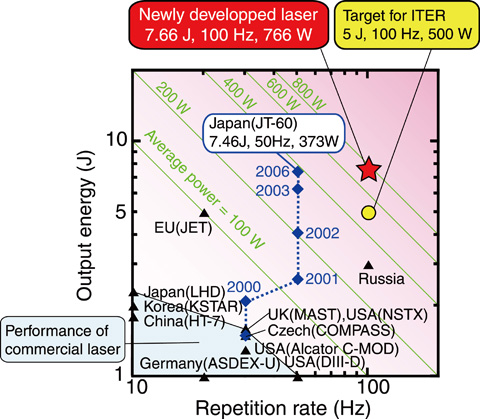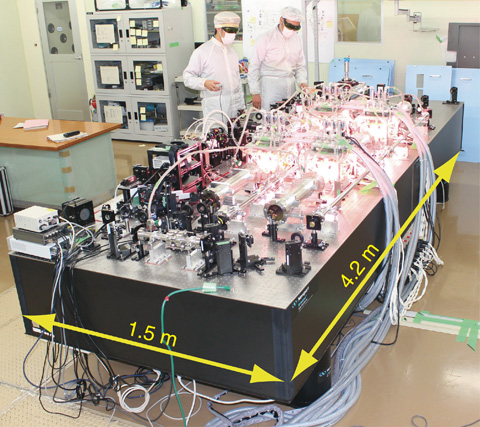
Fig.4-6 Comparison of plasma diagnostic lasers in the world

Fig.4-7 Laser system in operation
We are responsible for developing “the edge Thomson scattering system” that will measure electron temperature and electron density profiles in an edge region of ITER plasmas. The Thomson scattering is a plasma diagnostic technique that evaluates electron temperature and density by analyzing laser light scattered by electrons when a high-powered pulsed laser light is injected into the plasma. Photons scattered from electrons are extremely weak, and for each hundred billion photons injected into the plasma, only about one is scattered. To attain measurements with sufficient accuracy, the pulsed laser light must be fired with high energy. Moreover, to determine the plasma state, which varies from moment to moment, the laser pulses must be fired at a high repetition rate. In this diagnostic system, the Nd: YAG laser needs to provide 500 W of average output power; that is, 5 J/pulse of energy needs to be fired at 100 Hz. Meeting these design requirements for both high output energy and high repetition rate had been the biggest issues.
We have developed a laser system that provides 373 W (7.46 J, 50 Hz) of average output power; so far, this system has been shown the best performance than any other system in the world (Fig.4-6). However, to develop the laser system required by ITER, the repetition rate must be doubled. Moreover, the heat created in the laser amplifier must be controlled, typically by controlling the input energy to the laser amplifier. However, decreasing the input power also decreases the gain in amplification; this has posed a serious problem in that energy in an amplifier cannot be efficiently extracted as laser light. However, by using samarium-doped special glass tubes in the laser amplifier, the noise of the light, which was interfering with the improvement in amplification gain, is selectively absorbed. Therefore, even at half-input energy, the amplifier gain has been approximately doubled, compared to conventional performance. As a result, it becomes possible to efficiently extract energy from the amplifier, leading to an average output power of 766 W (7.66 J, 100 Hz). This corresponds to twice the conventional average output power (Fig.4-6, Fig.4-7). Thus, we have succeeded in developing a laser system that exceeds the target performance in ITER, and electron temperatures and densities can be measured with high accuracy.
A part of our research was accomplished by the support of the Institute of Laser Engineering, Osaka University.